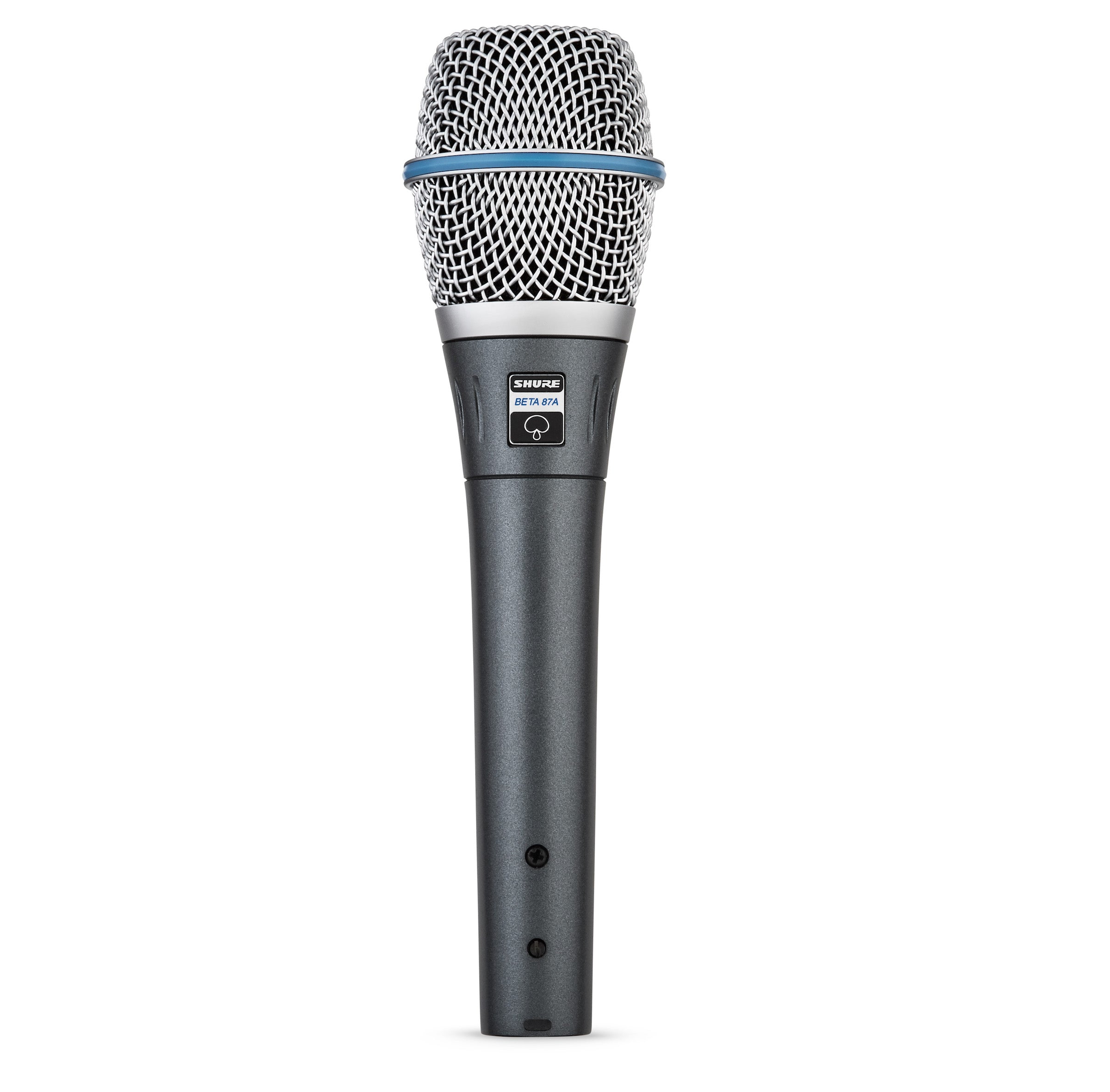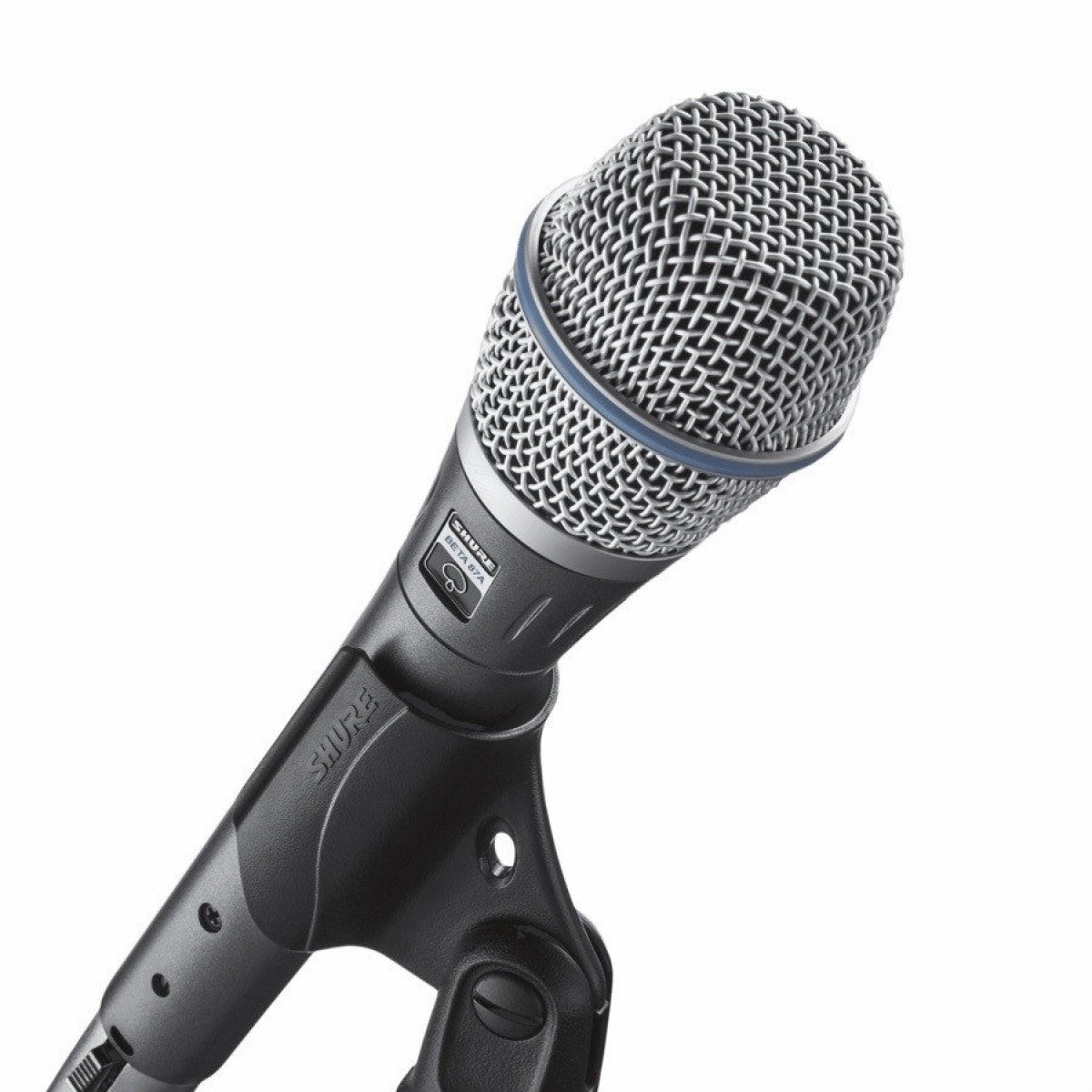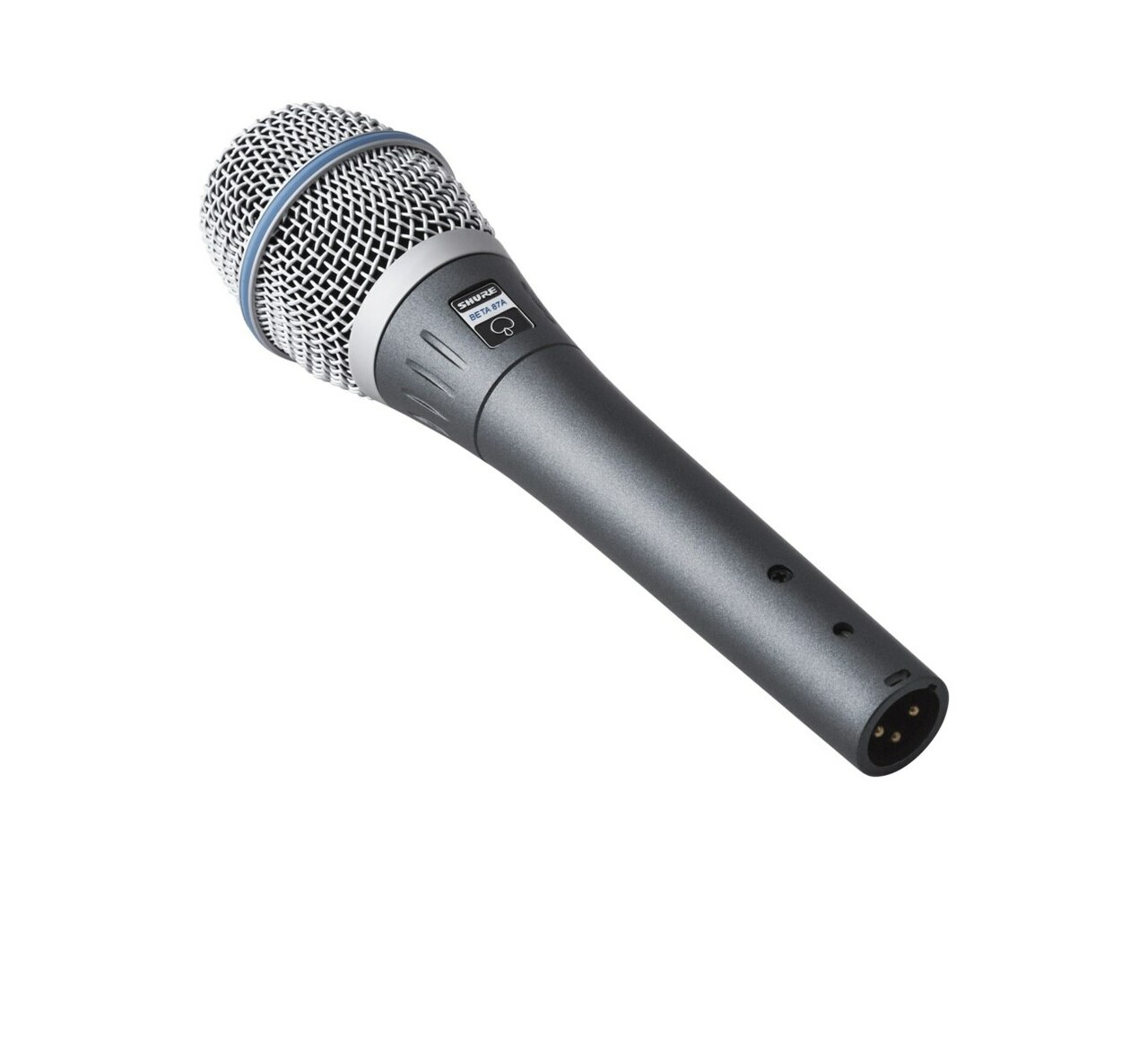Description
Add some studio-grade clarity to the live mix. Designed to capture brighter vocals with sparkling accuracy, the BETA® 87A brings more crisp to the concert. And the increased presence will have everyone singing your praises
IN THE BOX:
- 1 - A25D Swivel Adapter
- 1 - 26A13 Carrying/Storage Bag
General Description
The Shure Beta 87A vocal microphone is precision-engineered to deliver an exceptionally smooth frequency response in a supercardiod condenser design. Built to withstand extreme sound pressure levels (SPL), the Beta 87A is ideal for professional sound reinforcement and studio recording applications.
The tailored frequency response, combined with a controlled low-frequency roll-off, makes this microphone ideal for close-up lead and background vocals—especially in high SPL environments. An advanced cartridge shock mount system, hardened steel-mesh grille, and superior build quality withstand the rigors of daily touring and sound reinforcement.
Features
- Premier live performance microphone with Shure quality, ruggedness, and reliability
- Uniform supercardioid pick-up pattern for maximum gain before feedback and superior rejection of off-axis sound
- Smooth, wide frequency response with gradual presence rise and controlled proximity effect tailored for vocals
- Advanced cartridge shock mount system absorbs mechanical shock and minimizes handling noise
- Dent-resistant steel mesh grille and enamel coated metal alloy construction resist wear and abuse
- Effective built-in pop filter reduces undesirable wind and breath noise
- Very low susceptibility to RF and electromagnetic hum
Applications
General Rules for Use
- Do not cover any part of the microphone grille with your hand, as this will adversely affect microphone performance.
- Aim the microphone toward the desired sound source (such as the talker, singer, or instrument) and away from unwanted sources.
- Place the microphone as close as practical to the desired sound source.
- Work close to the microphone for extra bass response.
- Use only one microphone to pick up a single sound source.
- For better gain before feedback, use fewer microphones.
- Keep the distance between microphones at least three times the distance from each microphone to its source (“three to one rule”).
- Place microphones as far as possible from reflective surfaces.
- Add a windscreen when using the microphone outdoors.
- Avoid excessive handling to minimize pickup of mechanical noise and vibration.
Applications And Placement
The following table lists the most common applications and placement techniques. Keep in mind that microphone technique is largely a matter of personal taste; there is no one “correct” microphone position.
| Application | Suggested Microphone Placement | Tone Quality |
|---|---|---|
| Vocals | Lips less than 15 cm (6 in.) away or touching the windscreen, on axis to microphone. | Robust sound, emphasized bass, maximum isolation from other sources. |
| 15 to 60 cm (6 in. to 2 ft.) away from mouth, just above nose height. | Natural sound, reduced bass. | |
| 20 to 60 cm (8 in. to 2 ft.) away from mouth, slightly off to one side. | Natural sound, reduced bass and minimal “s” sounds. | |
| 90 cm to 1.8 m (3 to 6 ft.) away. | Thinner, distant sound; noticeable levels of ambient noise. |
Proximity Effect
Unidirectional (cardioid) microphones progressively boost bass frequencies by 6 to 10 dB below 100 Hz when the microphone is at a distance of about 6 mm (1/4 in.) from the sound source. This phenomenon, known as proximity effect, can be used to create a warmer, more powerful sound. To prevent explosive low frequency sound during close-up use, the bass response gradually rolls off. This provides greater control and helps the user take advantage of proximity effect.
Avoiding Pickup of Unwanted Sound Sources
A supercardioid microphone has the greatest sound rejection at points 120° toward the rear of the microphone. Place the microphone so that unwanted sound sources, such as monitors and loudspeakers, are at these angles, not directly behind it. To minimize feedback and ensure optimum rejection of unwanted sound, always test microphone placement before a performance.

Recommended Loudspeaker Locations for Supercardioid Microphones
Power Requirements
This microphone requires phantom power and performs best with a 48 Vdc supply (IEC-61938). However, it will operate with slightly decreased headroom and sensitivity with supplies as low as 11 Vdc.
Most modern mixers provide phantom power. You must use a balanced microphone cable: XLR-to-XLR or XLR-to-TRS.
Specifications
Type
Electret Condenser
Frequency Response
50 to 20,000 Hz
Polar Pattern
Supercardioid
Output Impedance
EIA rated at150 Ω(100 Ωactual)
Sensitivity
at 1kHz,open circuit voltage
-52.5 dBV/Pa(2 mV)[1]
Maximum SPL
1 kHz at 1% THD,1 kΩ load
140.5 dB
Signal-to-Noise Ratio
Ref. 94 dB SPL at 1 kHz
70.5 dB[2]
Dynamic Range
at 1kHz,1 kΩ load
117 dB
Clipping Level
1 kHz at 0.25% THD,1 kΩ load
-6 dBV (0.5 V)
Self Noise
typical,equivalent SPL, A-weighted
23.5 dB
Polarity
Positive pressure on diaphragm produces positive voltage on pin 2 with respect to pin 3
Weight
Net
0.207 kg(0.475 lbs)
Connector
Three-pin professional audio (XLR), male, balanced
Housing
Aluminum construction with painted blue metallic finish, and hardened steel grille with nickel satin chrome plating
Power Requirements
11 to 52 V DCphantom power (1.2 mA)
[1] 1 Pa=94 dB SPL
[2] S/N ratio is difference between 94 dB SPL and equivalent SPL of self noise, A-weighted







